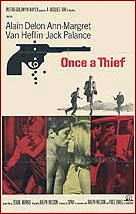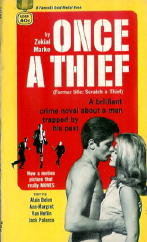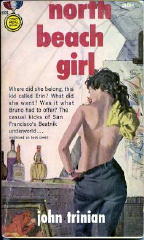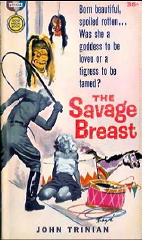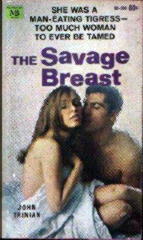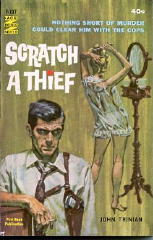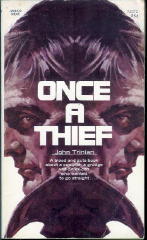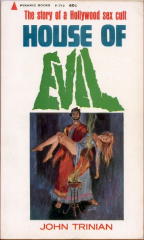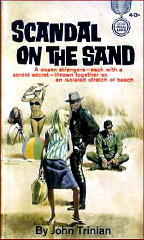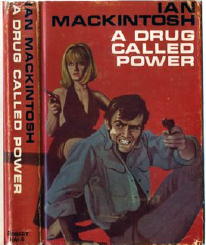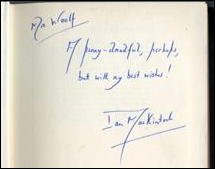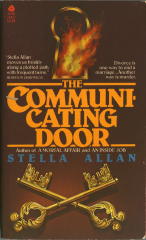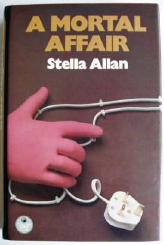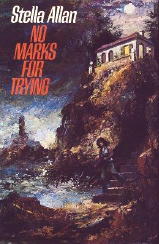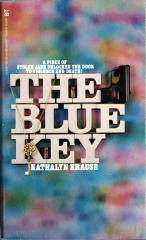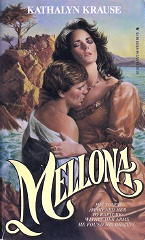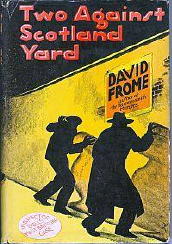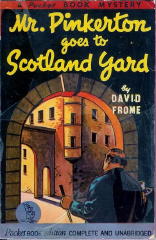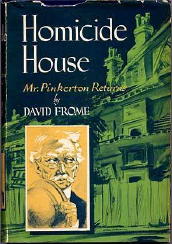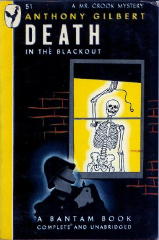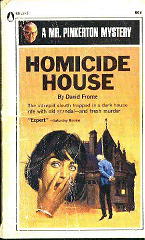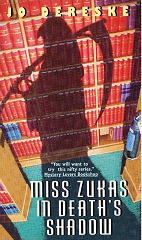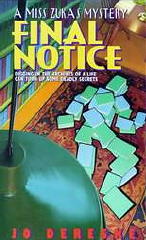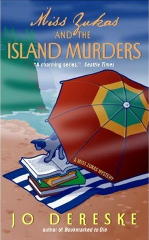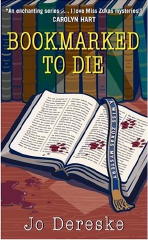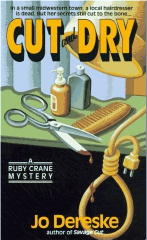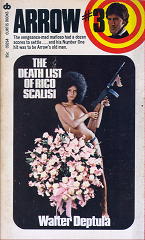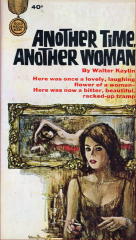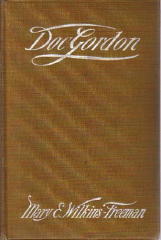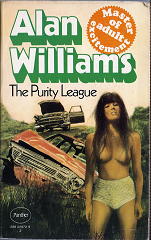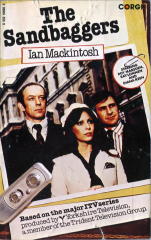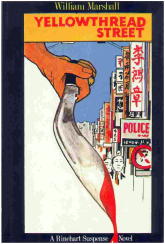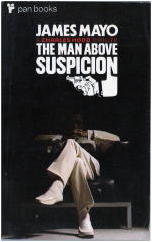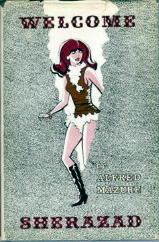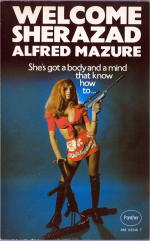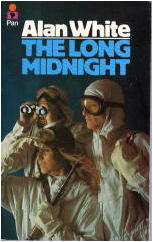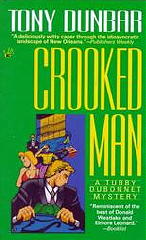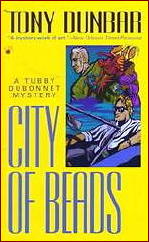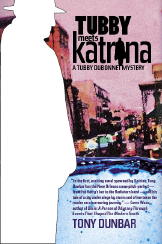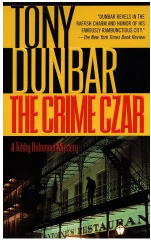Thu 22 May 2008
The Compleat KENN DAVIS.
Posted by Steve under Authors , Bibliographies, Lists & Checklists , Crime Fiction IV[12] Comments
At the end of my previous post on Zekial Marko, better known to paperback collectors and mystery fans as John Trinian, I hinted at a small piece of information that turned up in his online obituary.
Namely, that Marko had a brother named Kenn Davis. The double N immediately caught my eye. Could this be the same Kenn Davis, the mystery writer? Turns out that he is, and I hadn’t known it before. It was also news to Al Hubin, author of Crime Fiction IV, but after doing some investigating on my own, if it was a secret, it hasn’t been very well kept. People on various blogs and Yahoo groups have pointed it out on several occasions in the past.
So it’s not exactly breaking news, but it’s still reason enough to talk about Kenn Davis’s books. Expanded slightly from his entry in CFIV:
DAVIS, KENN. 1932- . Series character: CB = PI Carver Bascombe. All books are paperback originals.
The Dark Side [with John Stanley]. Avon 30957, pb, December 1976. [CB]
The Forza Trap. Avon 44552, pb, June 1979 [CB]
Bogart ’48 [with John Stanley]. Dell 10853, pb, February 1980
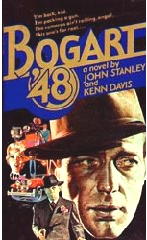
Dead to Rights. Avon 78295, pb, August 1981
Words Can Kill. Gold Medal 12667, pb, May 1984 [CB]
Melting Point. Gold Medal 12901, pb, May 1986. [CB]
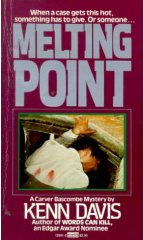
Nijinsky Is Dead. Gold Medal 13096, pb, 1987 [CB]
As October Dies. Gold Medal 13097, pb, 1987 [CB]
Acts of Homicide. Gold Medal 13351, pb, 1989 [CB]
Blood of Poets. Gold Medal 13352, pb, 1990 [CB]
In spite of the number of books, I have a feeling that both Kenn Davis and Carver Bascombe are fairly well forgotten today. Even though I believe I have all but one or two of the books, they’re boxed away where I can’t get at them. (You’ve heard that before.) So far I’ve been able to come up with only a few cover images, which you will see both above and below.
But did you know, as I certainly didn’t — and I’ll get back to Carver Bascombe shortly — that Kenn Davis is also a well-known California-based artist, and has been for over 50 years? Taken from a website illustrating some of his work, one of which is shown here:

Kenn Davis and John Stanley also co-wrote the screenplay for the comedy-horror film Nightmare in Blood, the storyline described on IMDB as: “Attendees at a horror-film convention in San Francisco keep disappearing. It turns out that the guest of honor is a real vampire…” Kenn Davis was the producer, and John Stanley directed. More on the making of the movie here, written by John Stanley himself. (No, that is not him in the coffin below.)
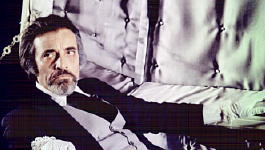
As for Carver Bascombe, from the second of the two websites linked to in the above paragraph, Stanley says:
“It was Kenn’s idea to write a story about a black San Francisco detective named Carver Bascombe. (This was before anyone had ever heard of John Shaft or Richard Roundtree.) We had even found a San Francisco-based stage actor, John Cochran, to play the Bascombe role.
“And then came a big mistake: American-International offered to buy the script from us, but because we had promised John Cochran that the three of us would make the film come hell or high water, we turned it down. (Primarily because they wanted the script without us attached as would-be film wreckers.) We should have taken the offer but we were young and idealistic–and very idiotic.
“(Dark Side of the Hunt didn’t completely die. A few years later it would be novelized by Kenn as The Dark Side –- my name was on it but I really didn’t write it –- and published by Avon. Kenn would go on to write an entire series about Carver and his San Francisco adventures.)
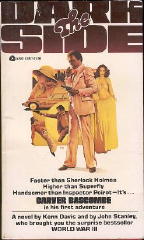
As it happened, The Dark Side was nominated for an Edgar in 1976 as Best Paperback Original. (Note that by the time the book was published, the movie Shaft had already appeared, in 1971, based on Ernest Tidyman’s 1970 novel) From the cover of The Dark Side:
Kevin Burton Smith in the online January Magazine has this to say about the series:
“Bascombe’s a young Vietnam vet with a military police background, who’s now an ambitious, art-loving private eye and part-time student working his way through law school in San Francisco. Bascombe’s passion comes in handy, because his cases invariably involve the arts somehow, be it opera, drama, literature, art photography, ballet, painting or poetry.
“The first few novels in this series were uneven, but by the fourth one, the Shamus-nominated Melting Point (1986), Davis had really hit his stride, with Bascombe sweating out a long, hot summer waiting to hear if he’s passed the bar, while at the same time he hunts down a missing sculptor.”
Of special note, the link above leads to a long article by Kevin about black PI’s, a complete overview from a historical perspective. It’s well worth your reading.
[UPDATE] 01-18-10. I have bad news to report. Kenn Davis died six days ago at the age of 77. For a wonderful tribute to him as an author, check out Jeff’s piece about him on The Rap Sheet. I am pleased to say that Mr. Davis saw this post I did on him (see Comment #7). I am not pleased to say that in spite of all good intentions, an interview I kept meaning to do with him never happened. I wish it had.
